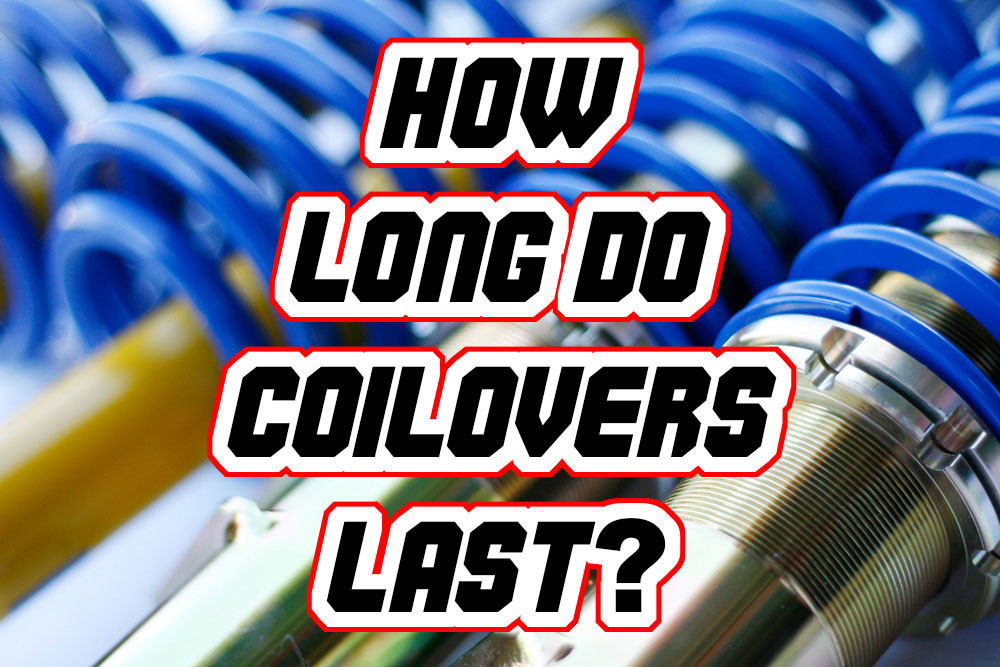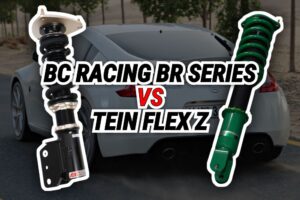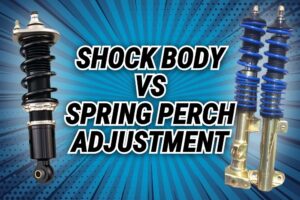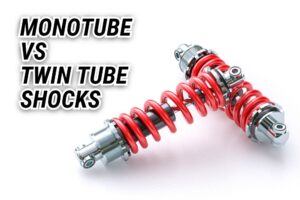How Long Do Coilovers Last?
Many people who are looking to buy coilovers or who already have coilovers installed on their car ask the question “how long do coilovers last?”.
There are a lot of factors that can determine the life of a coilover (which we will discuss here), however typically a set of coilovers will last you anywhere from 20,000kms to 150,000kms or more.
Factors That Impact How Long Your Coilovers Will Last
Quality of the Coilovers

The single most important factor that will determine how long your coilovers will last is how good the coilovers are to begin with.
Buying a good set of coilovers will make the biggest difference in terms of how long they last, so this is something to consider when budgeting for a set of coilovers.
If you decide to buy a cheaper, “budget” set of coilovers, be prepared for them to last significantly shorter (closer to the 20,000kms range) than if you buy one of the best coilover brands (which could last 100,000 kms plus).
The reason for this is that cheaper brands (and even cheaper models made by higher end brands) use cheaper, lower quality materials in order to be able to produce the coilovers for less money.
This means that the coilovers will fail sooner, particular the shocks, which usually start leaking or stop working correctly resulting in a poor ride quality and unpredictable handling.
They will also have less features such as lack of dampening adjustability, come without strut mounts and so on.
Ride Height the Coilovers Are Set To
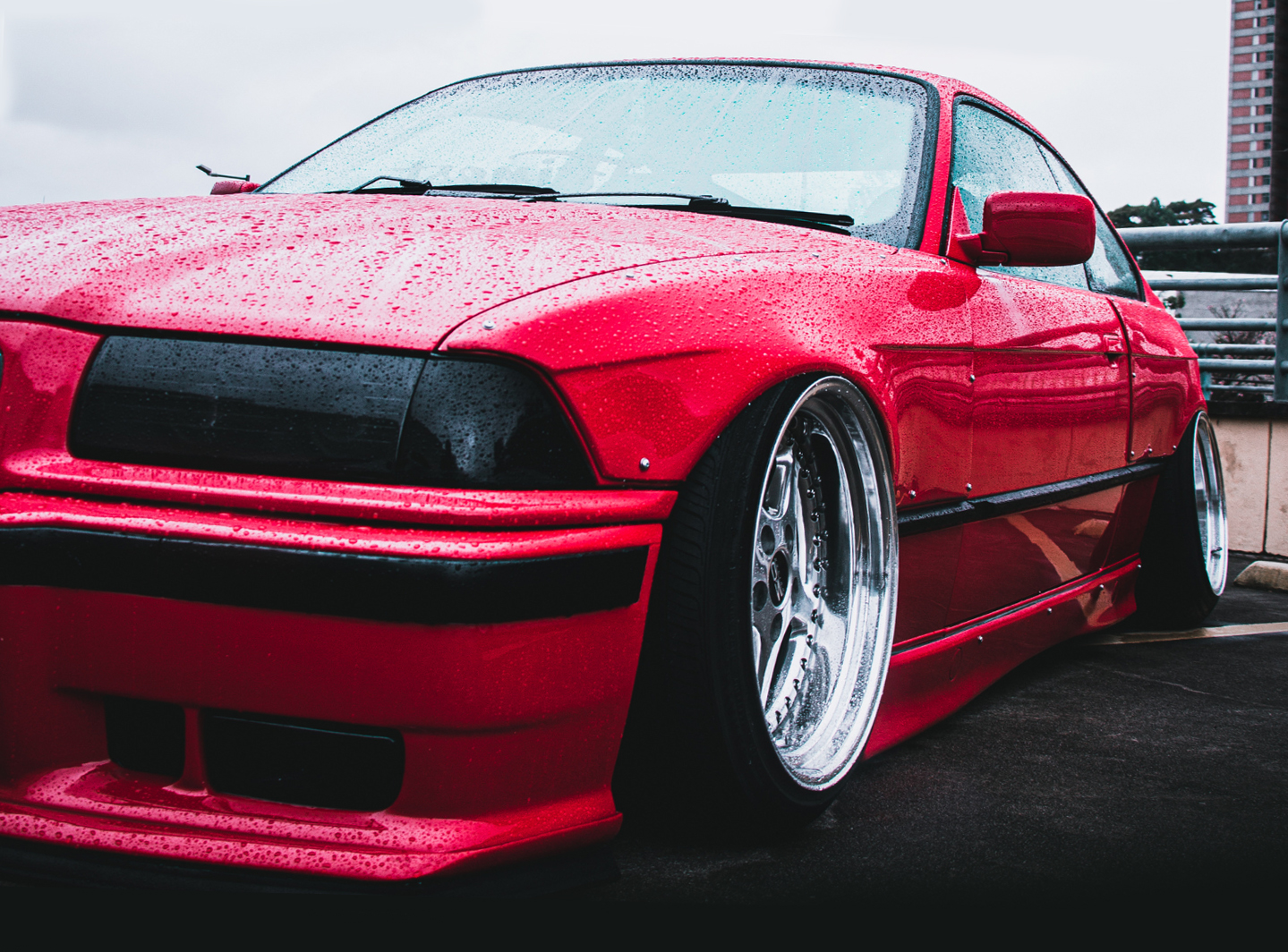
The ride height that the coilovers are set to is another major determining factor in how long they will last.
Most coilovers have a recommended height range setting, and if you go outside of these ranges, it can significantly impact that life of the coilover.
This is especially true if running them super low. Many coilovers, including expensive, higher end brands, will fail quickly when run at super low ride heights.
Because of this, a number of coilover manufacturers make coilovers which offer ride height adjustment by the shock body rather than the spring perch, which gives you full suspension travel at all ride height settings. This results in a more comfortable ride and a longer damper life, since you won’t be bottoming out all the time. An example of this are both BC Racing and Tein Flex Z coilovers.
Installation & Setup of the Coilovers
How well the installation was done can also impact how long they last. If the coilovers were not set up correctly, or something was done incorrectly during installation, it can result in quicker wear and breakdown on the coilovers which can lead to premature failure.
However, incorrect installation is not very common because there isn’t a lot that can be done wrong with installing coilovers, so unless you managed to really screw something up, this shouldn’t really be a worry.
However, what can be done wrong is the setup of the coilovers, particularly if they allow you to set spring pre-load independent of the ride height. If set incorrectly, it can seriously affect the performance of the coilovers.
Maintenance of the Coilovers
While coilovers don’t really require much maintenance, they can suffer from things such as corrosion if not cleaned regularly, particularly in harsher climates that have snow or salt on the roads.
If left for long periods of time, the corrosion can really take its toll on the coilovers, resulting in seized adjustment collars (which means you will no longer be able to adjust the coilovers) due to corrosion on the threads, as well as broken springs and other parts.
If you live in a harsh climate (or even if you don’t), cleaning your coilovers regularly is a good idea to extend their life.
You can get protective covers which fit over the springs and adjustment collars, which will help keep dirt, grime and corrosion away.
You can also get anti-seize lubricant which is a good idea put on the threads. This will keep them lubricated and keep moisture away, preventing corrosion and making them easy to adjust.
Common Coilover Problems & Signs That They Are Failing
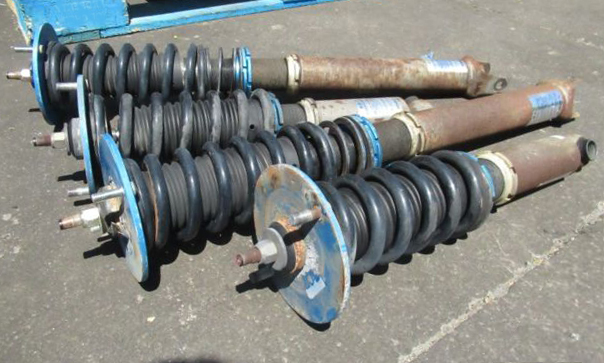
When coilovers start to fail, there will be typical signs that will let you know something is wrong. Here are the most common indicators that your coilovers are failing.
Poor Ride Quality
If you notice that suddenly the ride quality has gotten a lot worse, chances are that the shocks are blown and need to be replaced. Coilovers don’t just suddenly get worse for no reason. If this happens, it typically means something has failed. This will usually be followed by the shocks leaking, which indicates for sure that the shocks have failed.
Shocks Leaking Oil
As mentioned in the last point, if the shocks are leaking oil, it means they are done and need to be either rebuilt or replaced.
Depending on the coilover model, it may be possible to either rebuild the shock or replace it with a replacement shock from the manufacturer. You’ll need to find out whether the coilovers you have can be rebuilt or whether you can buy replacement shocks. Contact either the manufacturer or the shop you bought them from and they will be able to tell you.
Also keep in mind that you need replace shocks in pairs (fronts together or rears together). It’s not a good idea (and can be unsafe) to just replace or rebuild a single shock.
Some coilovers, especially cheaper ones, cannot be rebuilt or have the shocks replaced, which means that you will need to buy a new set. That’s one of the downsides of buying a cheaper coilover kit.
Popping Noises, Especially When Turning
This usually happens because the spring is binding on metal, usually on the spring perch. When you turn, it applies pressure on the spring while forcing it to rotate, which causes it to pop as it binds while doing so.
This is not usually a major problem and can be remedied by either putting anti-seize between the spring and perch or using nylon washers between the spring and perch (better coilover kits should come with these).
It’s also possible that the binding is happening between the upper spring perch and strut top mount. If this is happening, it could mean that your strut top mounts are worn and need replacing.
NOTE: It’s always a good idea to replace strut top mounts when installing new suspension so you don’t have to do the job twice.
Clunking or Knocking Noises
Clunking or knocking noises are usually due to metal hitting metal, which often means that some rubber part in your suspension is worn. This could be:
- Strut top mounts
- Ball joins
- Control arm bushings
- Sway bar bushings
- Sway bar links
It might not necessarily be directly related to the coilovers.
One thing to keep in mind though, is that installing firmer suspension like coilovers puts extra load on the other suspension parts, and is likely to wear them out quicker, especially if they are older (10+ years). So be prepared to have to replace a lot of the other suspension parts as well.
What to Do If You Find Out Your Coilovers Are Failing
If you have determined that your coilovers are failing, there are a few things you can do to decide the best course of action.
-
Check the warranty.
Most of the good coilovers (and even some cheaper coilovers) will come with warranty, usually between 1 – 3 years, but some even have lifetime warranty (like Bilstein coilovers).
Always check the warranty first and see if yours are still within the claiming period. If they are, you may be able to claim the warranty and get a new set of coilovers for free.
-
Find out if you can rebuild or replace the shocks
Usually the shock will be what fails, so find out if you can rebuild or replace the shock. If you can’t find the answer online, you can contact either the shop you bought them from or the manufacturer and they will be able to tell you.
If it happens to be some other part of the coilover that needs replacing, speak to the manufacturer and see if they are able to supply the replacement parts or sell you a single or pair of the coilovers. That will come out cheaper than buying a whole new set
-
Start shopping for new coilovers
If you are out of luck and your coilovers ae not within warranty and the shocks can’t be rebuilt or replaced, it’s time to shop for a new set. This could be a good time to upgrade to a better kit, especially one that gives you more features, is better quality and allows you to rebuild or replace the shocks.
- BC Racing BR Series VS Tein Flex Z Coilovers - April 15, 2024
- The Pros and Cons of Shock Body Vs Spring Perch Coilover Height Adjustment - April 13, 2024
- Monotube Vs Twin Tube Shocks: The Ultimate Guide - April 11, 2024

